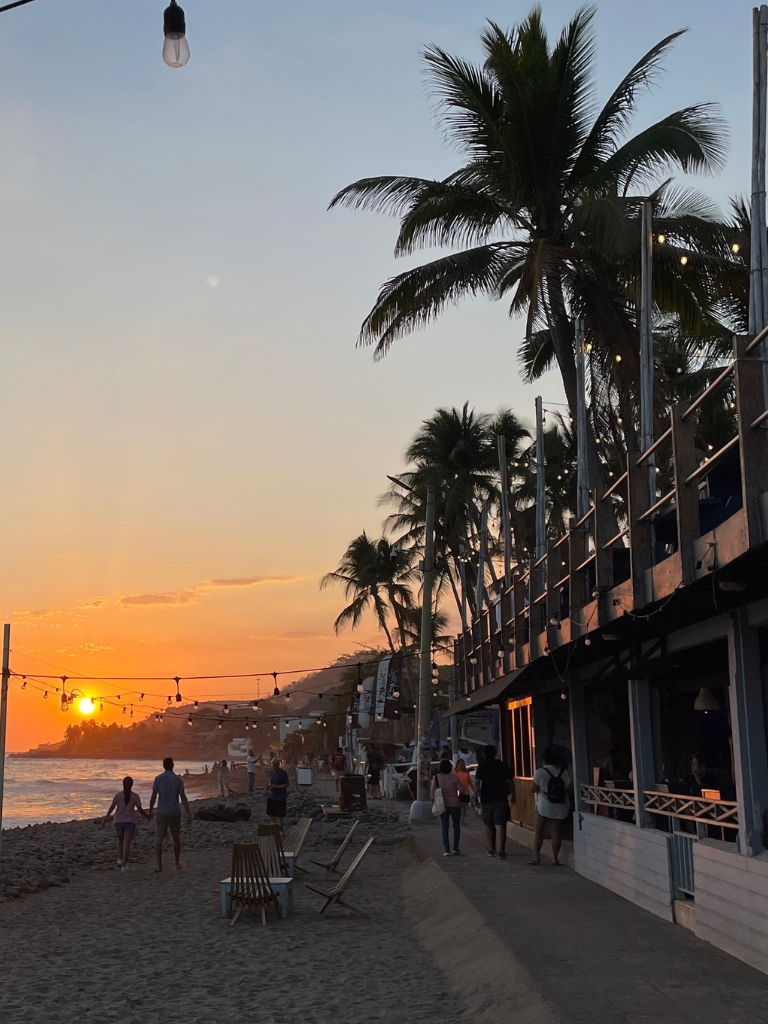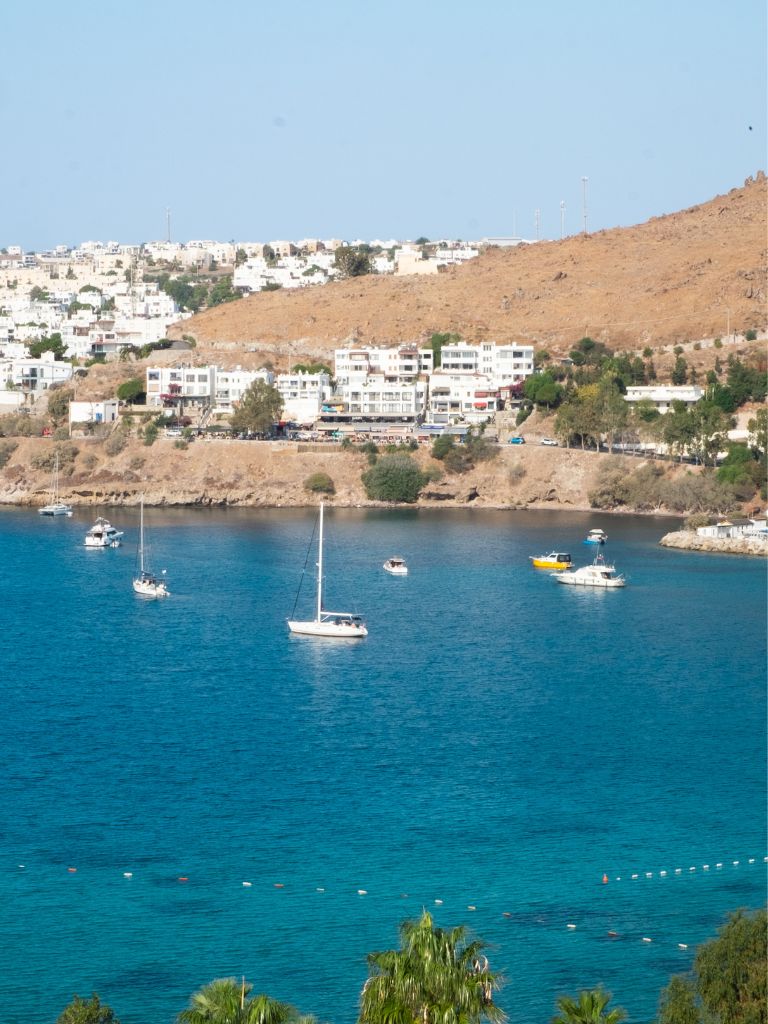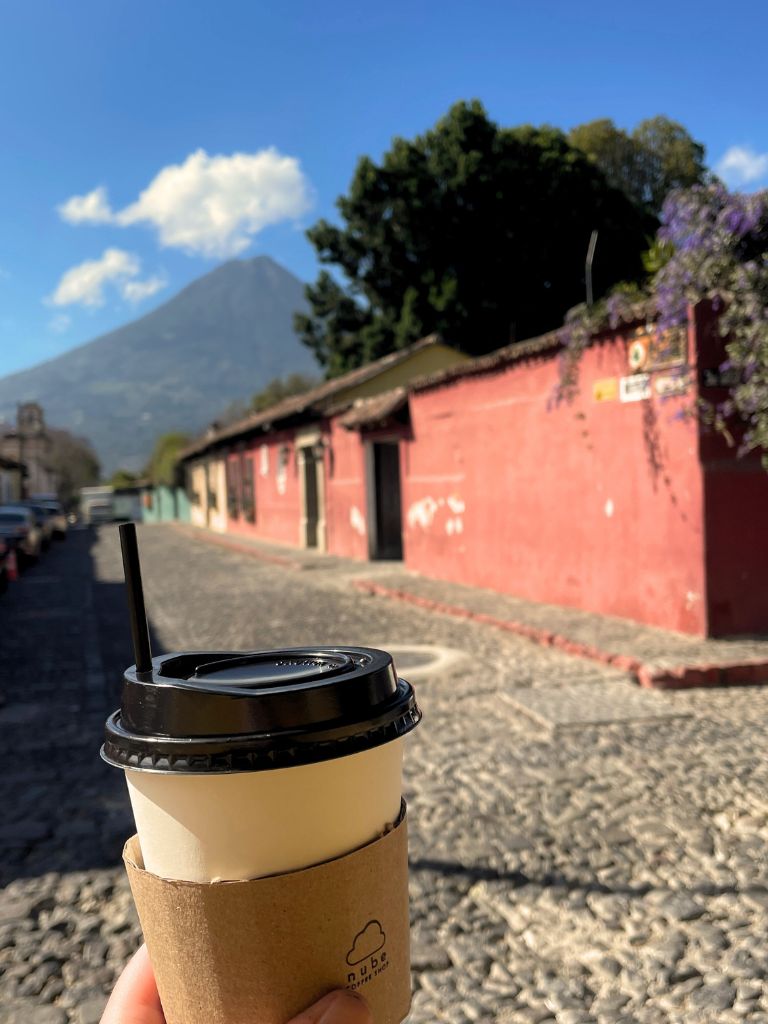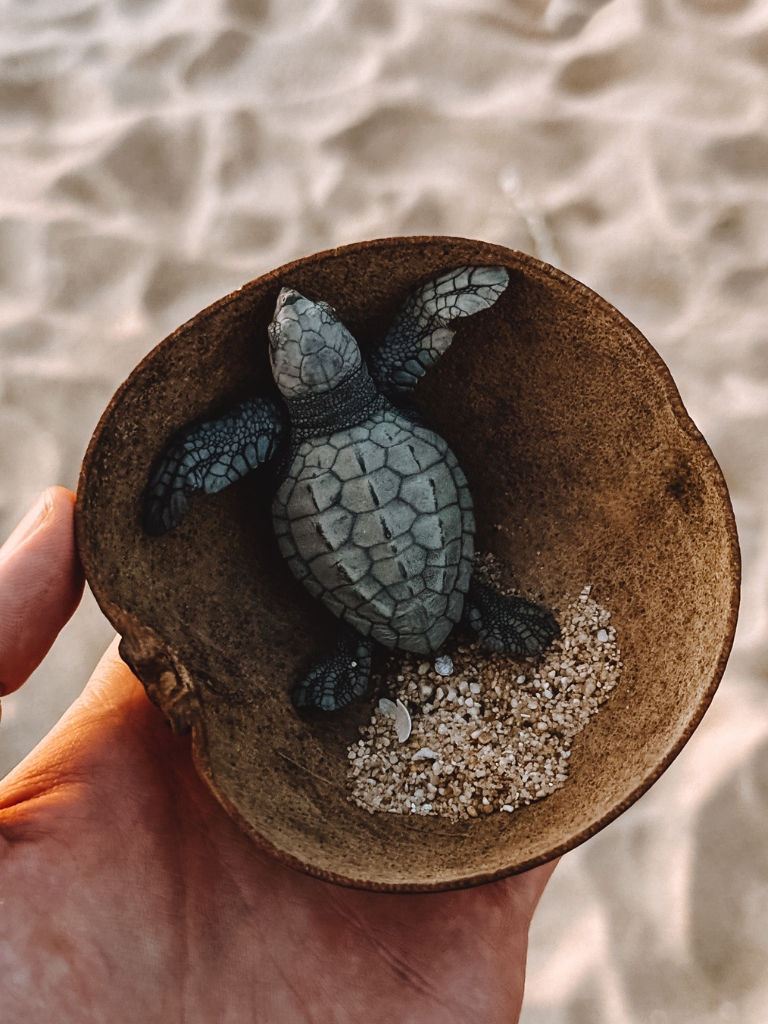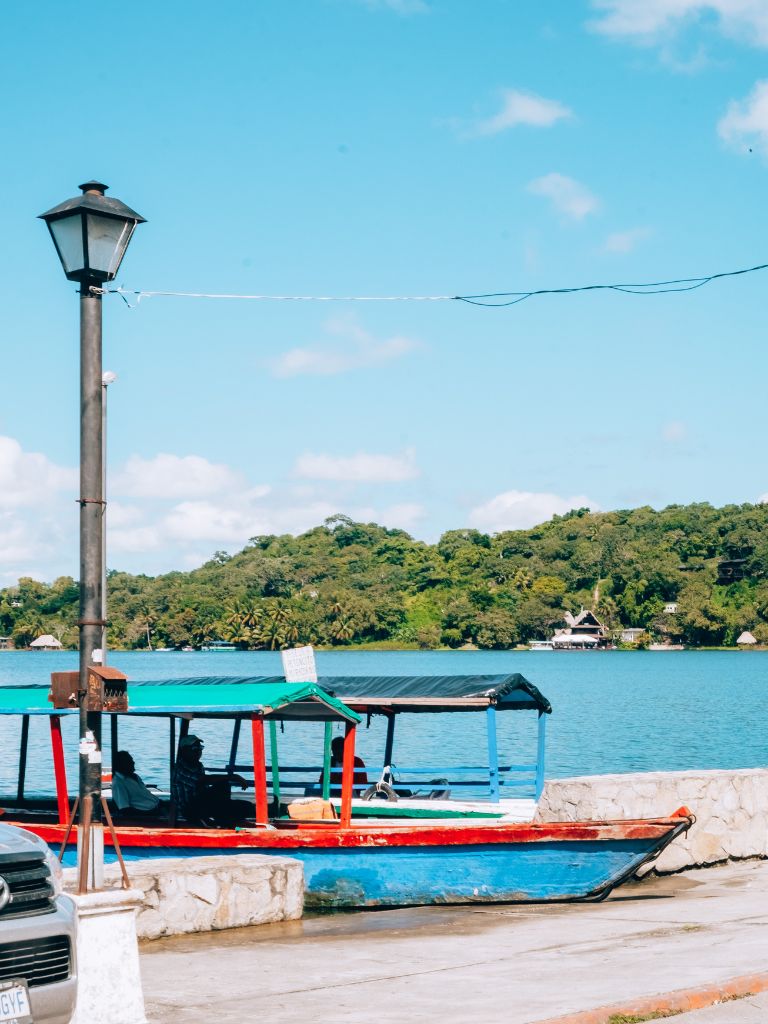Is Colombia Safe For Solo Female Travellers? 2023 Updates
Some links in this post contain affiliate links. I receive a small commission if you use the links at no extra cost to you! Happy reading 😀
How many times have you heard someone say, “don’t travel to South America, it’s too dangerous!” especially in Colombia? Don’t worry, it’s a common reaction when you tell someone your travel plans, especially your close friends and family.
We were warned multiple times about the dangers of Colombia before our trip. Am I glad I didn’t listen? Yes, absolutely!
Of course, there are unsafe areas of the country, just like there are anywhere else in the world. But for most of the time in Colombia, I felt safe; even if I did have my guard up a little.
Whilst Colombia, specifically Medellin, has a violent past, the cities have worked hard to get Colombia to the way it is today. Pablo Escobar (or as he’s referred to in Medellin by the locals ‘he who should not be named‘) is history, and the prominent crime and violent gangs on the streets no longer exist.
Like anywhere in the world when you’re backpacking, you have to use common sense. Walking around at 4 a.m. in a sketchy area or jumping in an unlicensed cab to save a few pennies is never going to be a good idea.
But if you stick to the basic safety precautions, don’t wander too far off the beaten track and trust your gut, Colombia is a safe place for solo female backpackers to travel. But I get it, it can feel daunting.
The following blog post explains everything you need to know about safety in Colombia, and how safe Colombia actually is for solo female travellers.
And remember, safety is subjective. What might feel safe for me, might not feel safe for you. Read the advice, follow as much as you can, but always put your own safety needs first.
Still got a question about ‘Is Colombia safe for solo female travellers’? Let me know over on Instagram or shoot me an email at jennie(@)jenniewanders.com!
🇨🇴 Other Colombia posts:
- 2 Days In Cartagena Colombia: Perfect Itinerary!
- BEST Hostels In Cartagena Colombia
- Cartagena Itinerary 4 Days: The PERFECT Plan!
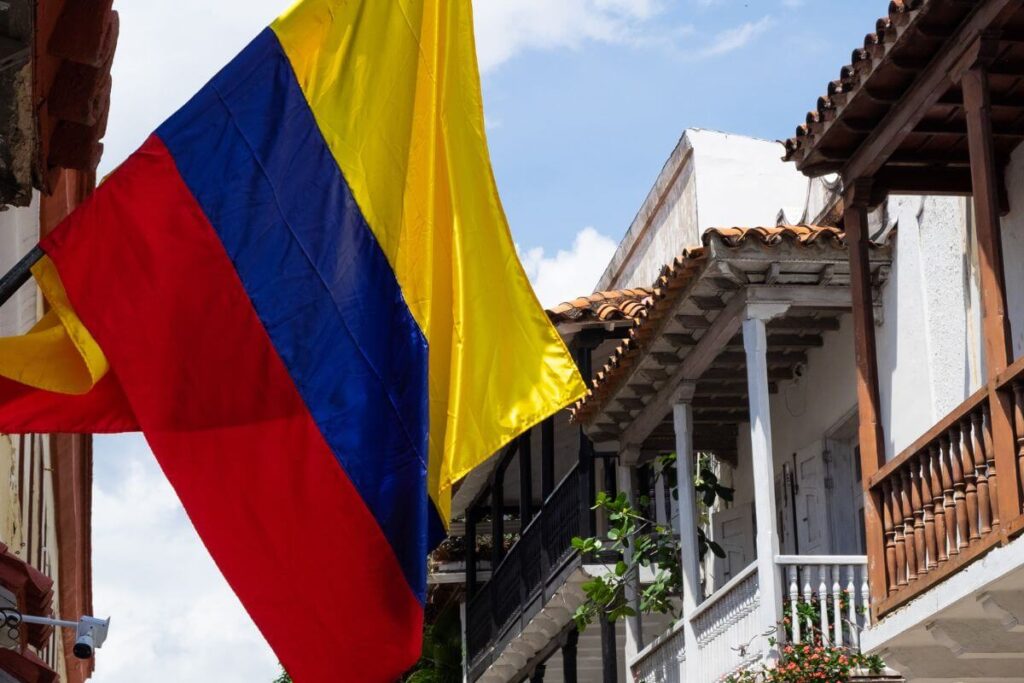
Is Colombia Safe For Solo Female Travellers? My Experience
As someone who has travelled to over 40 countries, lived in five, worked around the world and backpacked both solo and with friends, I have never experienced the amount of fuss I received when I was visiting Colombia.
“Is it safe?!”
“You can’t visit Colombia. It’s too dangerous!”
Had they ever been to Colombia? No, of course not.
Whilst they were totally and utterly wrong about the safety of Colombia, I get it. I understood their worries.
Sadly (and unfairly), the media portrays Colombia as one of the most dangerous countries in the world.
Netflix shows such as Narcos don’t help (especially when they’re filmed in the area you’re moving to. Yeah, mum loved that).
But if we look a little closer, and are honest with ourselves, Colombia does have a recent violent past. Just 30 years ago, Comuna 13, a neighbourhood in Medellin, had the highest crime rates in the world.
Kidnappings, gang activity, shootings and other illegal activities in the 1990s was rife, and Colombia wasn’t known for being a popular holiday destination.
But things changed. I’m not going to get into the history of it all, but Colombia had a huge turnaround. Crime rates lowered, the local’s way of life improved and gun rates are now lower than in some US cities.
And then tourism started to boom. The Colombian Government went out of their way to ensure visitors in the country were safe, and people felt able to travel to the country once again.
Nowadays, Colombia is one of the most popular countries to backpack. I like to call it one of the ‘holy grail’ countries on a backpacker’s list; everyone wants to go, everyone needs to go and everyone should go.
I, personally, felt safe in Colombia. But I did take extra safety precautions and measures.
As well as it being the most bio-diverse country on the planet, Colombia is full of life, character, energy, culture and history. I had high hopes for Colombia, and it didn’t disappoint.
And the bottom line? I felt safe in Colombia. No, I didn’t walk down any dark alleys or wander into off-the-beaten-track locations. And most importantly, I used common sense every single time I left the front door.
I felt safe, but I did have to keep my wits about me, and I kept my guard up. Petty crimes such as pickpocketing, muggings and drink spiking do still happen, and it’s important to be aware of that.
Bigger crimes and violence do exist (they exist in every country on the planet), but I stayed away from any situations that may have led me down the wrong path.
I didn’t buy any illegal substances from anyone on the street, stayed in the main tourist areas, booked hostels, went on group trips and day tours and most importantly; I went with my gut in every situation.
But of course, even the most experienced and hardcore travellers can experience unwanted attention, crime and uncomfortable situations.
As I always say, safety is subjective, and it is so, so important that you take safety precautions when travelling as a solo female, male, in a couple or even in a big group!
Is Colombia a good choice for new/inexperienced backpackers?
If you’re worried about safety in Colombia, don’t be. It’s an amazing country with a lot to offer, and I’d hate for you to miss out because of what ‘might‘ happen.
But would I recommend Colombia to someone who hasn’t travelled before? No, I wouldn’t (I’ll delve into the reasons in another blog post on another day).
But the bottom line – I wouldn’t recommend travelling solo in Colombia if you have never travelled solo before (unless you’re doing a group trip).
Below I have listed some of the best safety tips for women (or men!) visiting solo, with friends or in a group.
And remember, safety is subjective. It’s important to make your own judgement of Colombia. Don’t listen to those who have never even stepped foot in the country, but if you visit somewhere (anywhere) and don’t feel safe, leave!
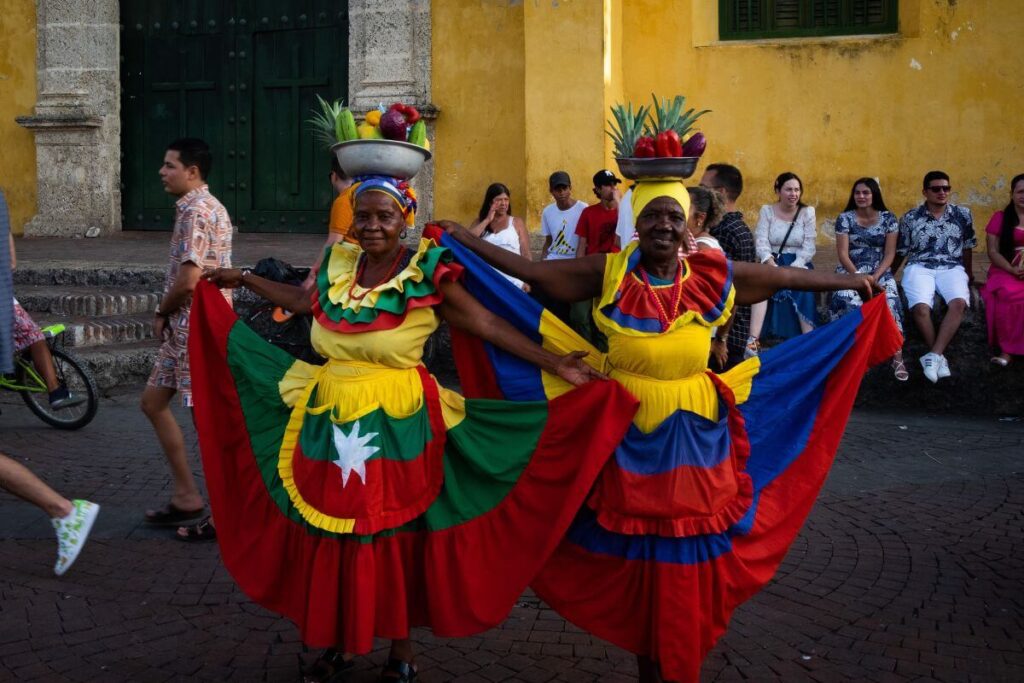
13 tips for staying safe in Colombia as a solo female traveller
I highly recommend getting travel insurance if you are backpacking South America. SafetyWing is the best company to cover your trip, covering both medical and travel delays, lost checked luggage, emergency response, natural disasters and personal liability. ➡️ You can sign up for SafetyWing here.
1. Know basic Spanish!
One of my biggest tips for staying safe in Colombia (and South America) is to know basic Spanish. We found fewer people spoke any English in Colombia and Ecuador (and rightly so), so we had to brush up on our Spanish skills stat.
From boarding buses to buying food in restaurants, asking for help or ordering a drink in a bar, knowing some basic phrases goes a long way. And if you’re going ‘off the beaten track’ or using public transport, it’s more important than ever.
I’m not saying you need to be able to speak fluently and need a gazillion Spanish lessons, but being able to ask simple questions and understand simple phrases really is key to staying safe in Colombia as a solo female traveller.
Forget all of your translate apps too; it’s rubbish when trying to ask conversational and everyday questions. We used SpanishDict, which gives you examples of how locals would actually say something (rather than a word-for-word translation like other apps do).
If you’re a solo female traveller in Colombia, here are some helpful phrases in Spanish that you may want to screenshot!
- Please: por favor
- Thank you: gracias
- My name is…: Me llamo…
- Nice to meet you: Mucho gusto
- Yes: Si
- No: No
- What: que
- Where: donde
- Toilet: banos/bano
- Girls/ladies: mujeres or damas (look for an M or D on the toilet doors)
- Help: ayuda
- Algo mas: anything else?
It’s also good to know that simple phrases such as ‘you’re welcome‘ will change between different South American countries.
For example, in Guatemala, we found the locals to say ‘de nada‘ when saying you’re welcome. Then in Colombia, it was more common to say ‘con mucho gusto‘ for the same phrase! There are slight differences, but it’s easy enough to get used to.
2. Still to well-known routes and places
Like in most countries, there are areas in Colombia that you want to avoid for safety reasons. This is not uncommon, and even if you think of your own country, I bet there are areas that you don’t particularly like visiting as a solo female traveller!
This is one of the main reasons why I’ve written so many detailed Colombian itineraries and blog posts (with more coming soon). Stick to a well-known route, and stick to areas that tourists visit!
Yes, you can go off the beaten track, but I highly, highly recommend going in a group or at least telling someone where you are going.
So, where are the safest areas in Colombia for solo female travellers? Stick to:
- Medellin
- Bogota
- Cartagena
- Minca
- Santa Marta
- Tayrona National Park
- Guatepe
- Salento
- Costeno
- Palermo
- San Bernado Islands
- Tatacoa Desert
3. Use tourist shuttles to get around the country, and don’t hire a car
If you are backpacking Colombia, use tourist shuttles to get around. The shuttles are full of other backpackers going to the same destinations and hostels that you are! This gives total peace of mind when you’re travelling around solo, and is also a great way to make friends.
Shuttles are easy to book. You can either book via your hostel, travel agents or online here. Regardless of who or where you book, you will more than likely be on the same shuttle. Most booking sites use the same shuttle companies.
🦉 TOP TIP: Colombia is a big country. If you’re short on time, I recommend flying between places such as Medellin and Cartagena. Otherwise, you’re looking at 20+ hour bus journeys! Do your research first and decide the best mode of transport for you.
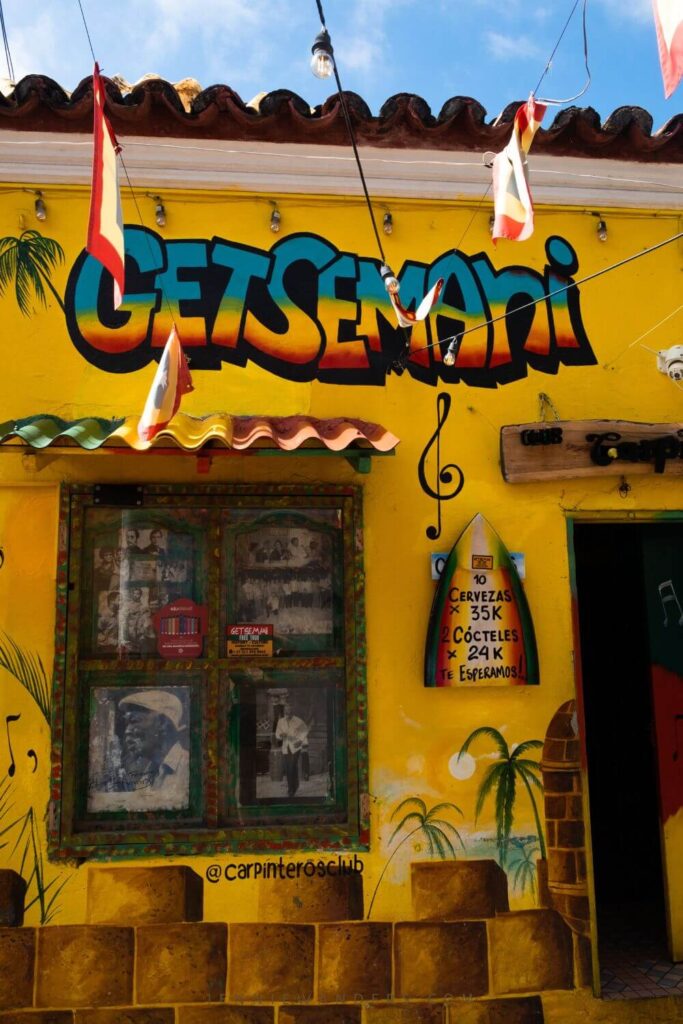
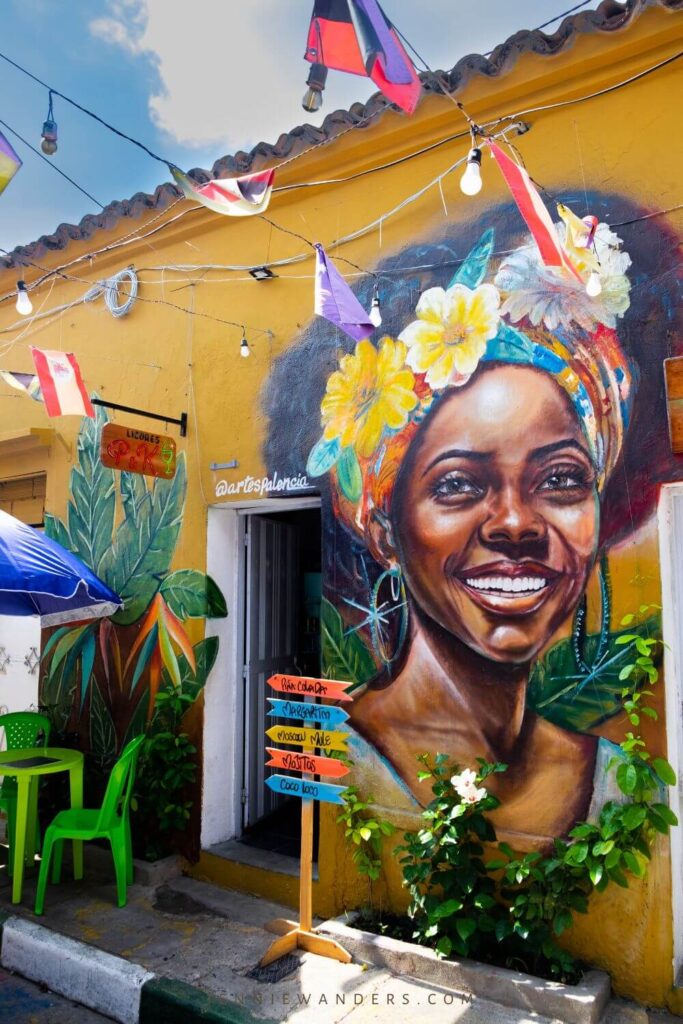
4. Only use Uber or licensed taxis
Never get in a taxi in Colombia (or anywhere) that simply has the word ‘TAXI’ written on the front – usually in white marker pen or even chalk. This is a big no-no and typically means they are unlicensed and illegal.
We, unfortunately, had an odd and uncomfortable experience with a yellow taxi in Medellin. He saw we were looking for a cab and heckled us over (and in Colombia, the chaos is hard to avoid), and we jumped in his cab for a ten-minute journey.
When in the taxi, I noticed he was unlicensed, had a big wad of cash under his seat and a dramatic knife scar across his face (this sounds like something out of a movie, but it’s true, I promise!)
He was giving me strange looks in the mirror so I asked him to stop halfway through our journey. I quickly made up an excuse for us to get out of the car early and we left. It was only a gut feeling, but I knew I wanted to be out of the taxi, and fast.
In these situations, it’s always important to trust your gut. Always have an excuse ready (“oh, I forgot I need to pop to that shop” or “oh, my friend is actually meeting me closer than I thought…”) and if you feel uncomfortable, do something. Don’t worry about looking silly or embarrassed; safety comes first.
Taxis in Colombia must be licensed. In Medellin, they were bright yellow and had licensed stickers on the front. Ubers are actually illegal in most parts of Colombia, but they still operate. They might just ask you to sit in the front so it doesn’t look like an Uber ride (and it’s perfectly safe).
If you need a lift to the airport or a specific location, I highly recommend booking a private transfer.
5. Only use the public buses on well-known routes during the day
Public buses in Colombia are a popular way to travel. They’re cheap and frequent, and whilst they might not be comfortable, they’re convenient and run all over the country.
But the buses are hectic! Two seats often end up seating four people. And you’ll need to speak some basic Spanish, at least to tell the driver where you’re going and that you need to pick up your bag from the bus roof before it drives off!
Buses in Colombia are also one of the most popular ways for locals to travel, so expect them to be busy! This also sadly means pickpockets and thieves can operate easily, so keep all of your valuables in sight.
Most of the time, public buses in Colombia are safe. But to be even safer, make sure you are taking a well-known route, keep your belongings close to you and use common sense.
⚠️ Do not put your bag on the floor under your seat on the bus. Thieves use this as a common way to cut/slice through your bag and steal your belongings whilst being undetected. Keep it on your lap or within your eyesight!
6. Avoid any interaction with illegal substances and street sellers in Colombia
There’s always going to be one thing that pops into your mind when thinking about visiting Colombia. Unfortunately, this line of business in Colombia causes a lot of distress, crime and violence among the locals.
In addition to the locals being negatively affected, it’s dangerous to get involved! It’s known (and I’ve seen first hand), how dealers work hand-in-hand with the police, and end up tricking tourists. When you buy something, you might then be stopped by the police, asked to pay a hefty fine and even spend a night in a jail cell unless you pay a certain – large – amount.
If you can, avoid this altogether. It simply isn’t worth it.
7. Don’t walk around certain areas at night
Safety is subjective, so I can only talk about my experiences in Colombia when it comes to safety.
If you’re travelling solo (or even in a couple like we were) stick to the main areas, busy and well-lit streets. When I went off course a little, I didn’t feel as safe. But as I said, safety is different for everyone.
My biggest tip is to stay in a hostel or hotel in one of the most well-known, touristic areas. This means you can just stick to the surrounding safe areas and do not need to wander into any unknown territories.
And whether we like it or not, there sadly are areas in most cities in the world that solo female travellers have to avoid.
Still unsure? Speak to the staff at the hostel. Ask them; “is it safe for me to walk to xyz tonight?” “should I take any specific routes to get there?” to add an extra layer of security.
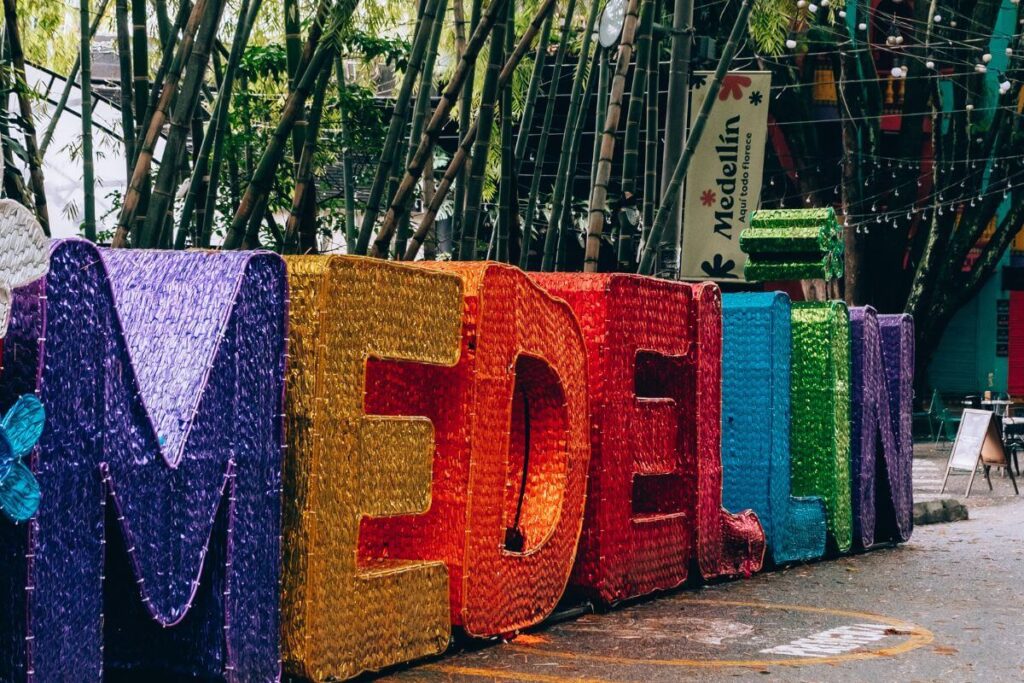
8. Stay in hostels or well-located hotels/apartments
Hostels are one of the best ways to stay safe as a solo female traveller in Colombia. In general, hostels are in a good and safe location, meaning you don’t need to worry about being in a risky area. They should also have good safety measures in place for all visitors.
As a backpacker myself, I’m a big advocate for hostels. Staying in hostels means you can make friends from day one, and there are people around you immediately.
During your stay at a hostel, you might become friends with a group of people and end up travelling around with them. Or, you might book tours and activities with the hostel, which again are always done in big, safe groups!
9. Book tours and organised trips for experiences
Whilst you can visit most of the big attractions in Colombia alone, visiting these locations in a group is a safe and fun way to see the country!
Most tours will organise transport to and from the locations, and you will be with other like-minded travellers. This gives an extra level of safety and security, especially if something goes wrong.
🌎 For organised group tours to Colombia, I recommend this company. They have thousands of tours around the world, and their Colombia trips look incredible!
Some of the best day trips in Colombia include:
- Guatepe Day Tour 🪨 ➡ check prices here!
- Communa 13 (Medellin) 🌈 ➡ check prices here!
- Full-day snorkelling on the Rosario Islands (Cartagena) 🤿 ➡ check prices here!
- Palenque Freedom Tour (Cartagena) 🌍 ➡ check prices here!
- Mud Volcano (Cartagena) ➡ check prices here!
- Sunset Cruise (Cartagena) ➡ check prices here!
- Coffee Tour (Medellin) ☕️ ➡ check prices here!
10. Know your emergency numbers
Hopefully, you will never need to use Colombia’s emergency numbers, but just in case you do, these are the numbers you will need to dial.
🚓 Police and national assistance: 123
🚑 Medical emergencies: 125
For safety reasons, always let someone know where you are when travelling Colombia. Check in with a family member or friend often, and let them know where you are staying!
11. Install an eSIM on your phone (or get a local SIM)
Whether you choose to get a local sim or an eSIM, always make sure you have data when backpacking Colombia. This gives an extra layer of security and means you can reach out to someone if necessary.
ESIMs are easy to download and ready to use within a few minutes of purchase. They’re great if you’re landing or crossing into a country solo, and would like to use your phone immediately. If you’re visiting Colombia solo, I recommend checking out the eSIM packages here.
12. Always carry a portable charger
I strongly advise carrying a portable charger so you can use your mobile phone whenever needed.
Not only is this needed for directions and communication, but it’s vital that you have a phone battery in emergencies. Can you imagine that uncomfortable gut feeling whilst having a dead phone?
Portable chargers aren’t that expensive, and you can buy a tiny one that fits into your purse or pocket. It may seem annoying, but trust me, it could save your life! You can buy my favourite and most reliable portable charger here. It lasts up to 4-5 charges!
13. Be kind, friendly and SMILE!
I know everyone has their own experiences, but we found that Colombians were friendly, welcoming and kind. Everyone greeted us with a smile, welcomed us to the country and made us feel safe!
I’ve had readers not believe me that locals went out of their way to speak to us, but it really did happen. That’s why I always say knowing at least a basic level of Spanish goes a long way.
And this kindness works in both ways! We always smiled, greeted and even waved to locals. Ultimately, we were in their country, and we wanted to show respect and gratitude.
This also has a direct impact on how safe you will be when in Colombia. I’m not saying it will stop anything from happening, but it will at least help. Kindness always wins!
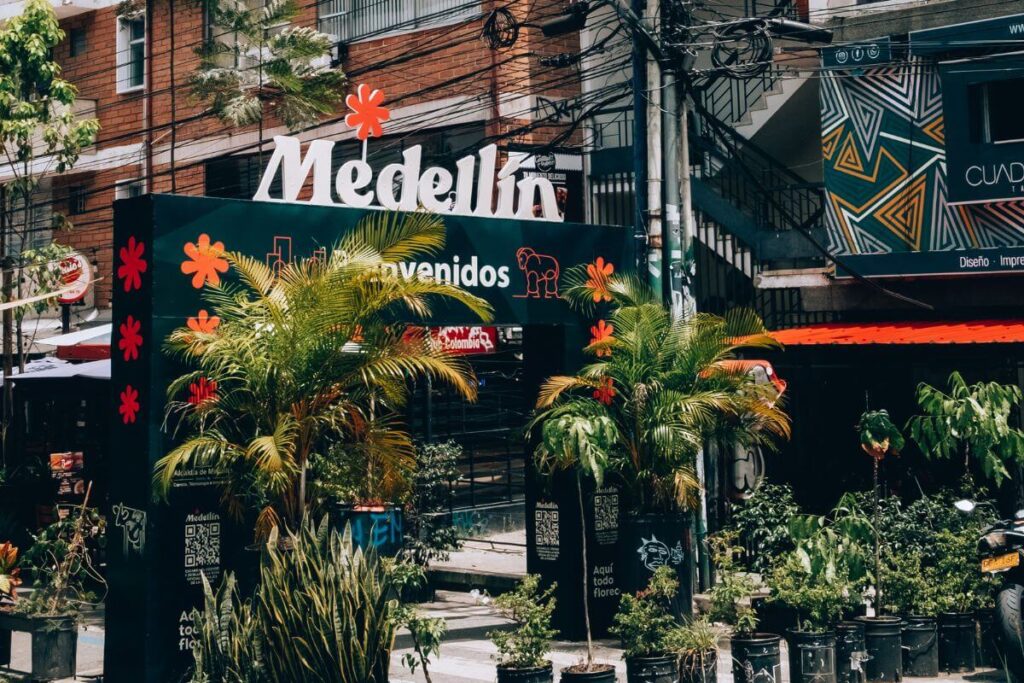
Useful apps for staying safe in Colombia
- Always have a local or eSIM installed whilst travelling through Ecuador. Avoid being on buses, in taxis or walking around without any phone signal. ESIMs are easy to download and ready to use within a few minutes of purchasing, so there’s no longer a need to hunt down free Wifi! ➡ You can check out the prices and packages for eSIMs here.
- Google Maps allows you to follow area maps even when you’re offline. Download some of your local areas before heading out to ensure you can travel safely on the right route at any time.
- SpanishDict: This is similar to Google Translate – but it gives more conversational terms when translating rather than direct word-for-word translations. We used it daily when travelling Central and South America.
- Shake2Safety allows users to input emergency contacts to which a message, location, audio or photo can be sent in an emergency situation. Simply shake your phone or click the unlock button 4 times to send the alert. This can also be used without wifi and when your phone is locked.
- The Circle Of Six app allows you to save 6 contacts of your choice which can be notified in just two taps if you’re in an emergency situation.
- As horrible as it sounds, One Scream works by being able to detect the scream of a panicked female. A loud siren will go off, and after 20 seconds an automated voice call and message will be sent to your emergency contacts.
Where to stay if you are a solo female backpacker in Colombia
If you’re backpacking Colombia solo and are worried about safety, I recommend staying in hostels. You can even volunteer in hostels to make friends and have somewhere safe to live and work!
Even if you get a private room, stay in hostels to meet like-minded travellers and other women in the same position as you.
➡ You can view and book all Colombia hostels here.


Getting around if you are a solo female backpacker in Colombia
You can travel around Colombia in multiple ways, depending on how much time you have, your budget and where you want to visit. This blog is full of the exact, detailed ways to travel from place to place (see links below).
The most common way for backpackers to travel around Colombia is via tourist shuttle, public bus or private transfer.
Public buses in Colombia are commonly used, as they’re cheap, frequent and safe. They’re a little more hassle than a tourist shuttle, and you have to be wary of your belongings (similar to anywhere in Latin America). I recommend always checking tourist shuttle availability first.
➡ Book tourist shuttles around Colombia now!
Is Colombia safe for solo female travellers? FAQs
1) Is Cartagena safe for tourists?
Yes, Cartagena is safe for tourists! As long as you stick to the right areas and use common sense, Cartagena is a great place for a vacation or solo backpacking trip.
If you’re visiting for the first time, stay in Getsemani for the best hostels and old-town culture, or Bocagrande if you’d like to be in a Miami-style high-rise by the beach.
Note that Cartagena can be a little overwhelming and hectic though – especially in areas like Trinidad Square in Getsemani – but it’s safe. Just crazy!
2) Is Bogota safe for tourists?
Bogota gets a bad rep, but it is safe for tourists. Crime rates have improved dramatically over the past few years, and it is now a popular place for tourists to visit. If you’re visiting for the first time, book accommodation in Zona Rosa.
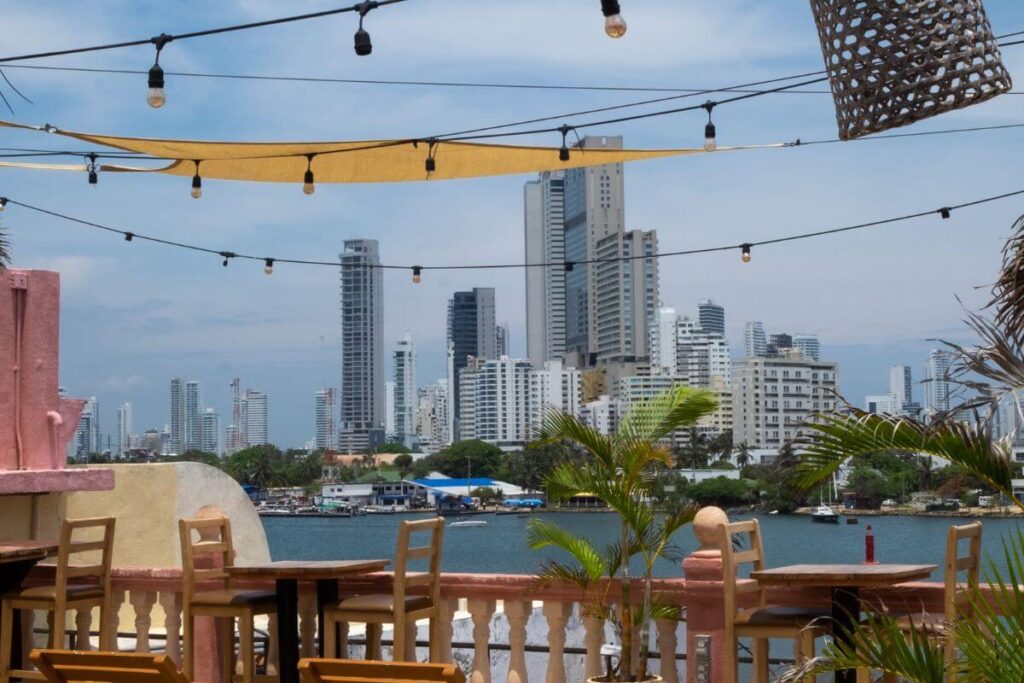
3) Is Medellin safe for tourists?
Yes! Medellin is safe for tourists. We lived and worked in Medellin for two months as digital nomads and loved it. Of course, there are areas that should be avoided, but on a whole, Medellin is a safe, fun and welcoming city for tourists.
If you’re visiting for the first time, book accommodation in either El Poblado or Laureles.
Don’t forget travel insurance for South America!
If you’re visiting South America as a backpacker, or even for a short vacation, it is so important to have travel insurance. And if you ended up on a post that’s called ‘epic party tips’, you know (just as well as I do) that you definitely need travel insurance.
Personally, I recommend SafetyWing. As a digital nomad and world traveller myself, I can confirm it is the best travel insurance out there. And one of the cheapest – they have deals that start at just $42 USD per month.
I know, I know, you’re thinking ‘but I can’t afford that!’. I was the same! It’s tough to fork out $42 a month on something ‘you might not need’. But what if something DOES happen? That extra Mezcal shot results in you falling down the stairs, or you eat something dodgy from a street food van.
If you need medical help at any point whilst in South America, you need travel insurance.
With SafetyWing, you’re covered on travel emergencies, basic medical costs and medical expenses throughout your trip, so you can travel without worry (at a backpacker’s price!)
Don’t even think twice about getting travel insurance for South America. Trust me, I have heard enough horror stories about backpackers who haven’t had insurance and have ended up in a lot of debt. Don’t be that person!
If you’ve been putting the job off because it takes a lot of time and effort to research the best travel insurance companies, I understand. That’s why I’ve done the hard work for you. Sign up for SafetyWing, and the job is done!
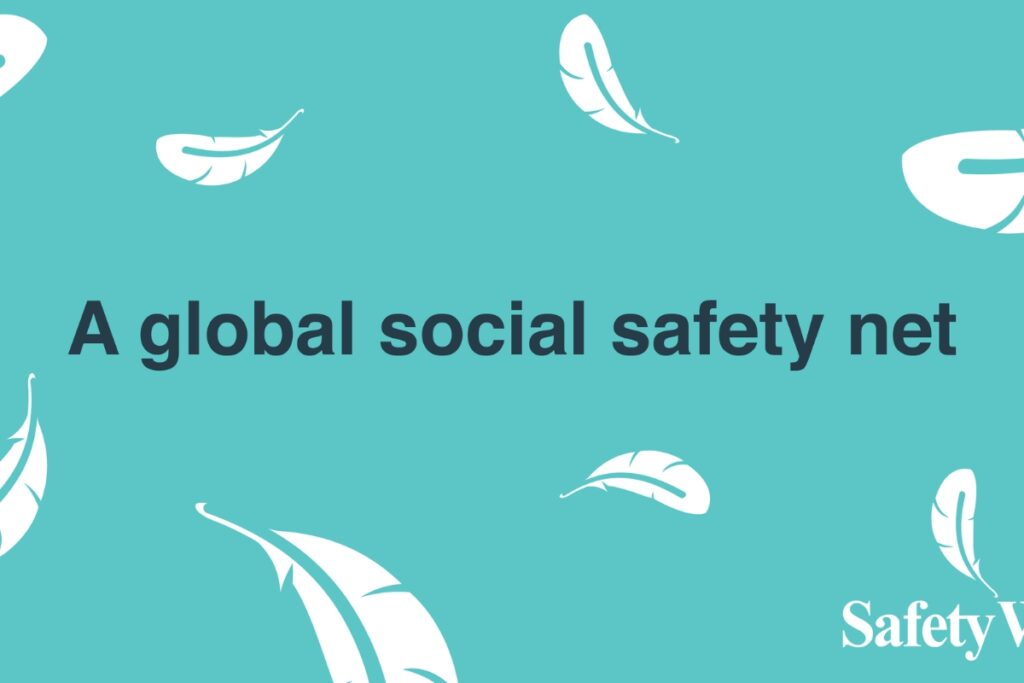
Is Colombia Safe For Solo Female Travellers? In A Nutshell
So, there you have it! Everything you need to know about how safe Colombia is for solo female travellers. When you’re planning a trip to Colombia, make sure you let me know over on Instagram or in the comments below!
If you haven’t seen my blog before, I write posts aimed at real-life travellers wanting authentic and down-to-earth information.
I’m currently travelling around the world with my boyfriend (read more here!), creating guides and itineraries for you to follow in our footsteps!
Keep an eye out for more Colombia content, all written from a personal and realistic point of view. You can sign up for my newsletter and juicy travel updates here!
As always, thanks for reading and supporting the blog!
Happy travelling 🙂
Jennie x
🇨🇴 Other Colombia posts:
- Medellin To Cartagena: FULL Transport Guide
- 10 BEST Day Trips From Cartagena Colombia!
- 10 BEST Day Trips From Cartagena Colombia!
- Backpacking Ecuador: COMPLETE Guide
MEET THE AUTHOR!

Hi! I'm Jennie! As a part-time travel blogger based in London, I'm using my 10+ years of travel expertise to encourage & inspire you to step out of your comfort zone through sustainable, mindful and purposeful travel.
If I'm not writing, I'm either reading, drinking coffee or taking a wild swim (all at the same time if I'm feeling impressive).

